By LISA EISENHAUER
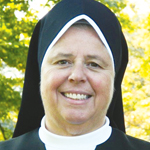
Sr. Veilleux
Sr. Anthony Veilleux, O CARM, has seen firsthand the ill effects that visitation restrictions imposed in response to the COVID-19 pandemic have had on some nursing home residents.
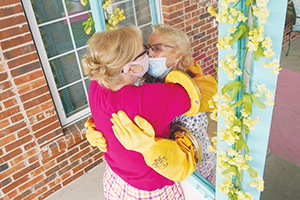
Kay Pickett, left, uses the “Arms Of Love,” a COVID-safe plexiglass booth, to safely hug and kiss her mother, Sue Croan, at Garden Place Columbia Senior Living in Columbia, Illinois. Because of restrictions in place since early in the pandemic, many residents of eldercare communities went months without in-person visits.
Bill Greenblatt/UPI
She directs mission integration for St. Patrick's Residence in Naperville, Illinois, a long-term care community that is part of The Carmelite System. Since its doors were locked in mid-March to almost everyone except residents and staff to help stem the spread of the infection, the community has assisted residents with remote visits through phone calls and smartphone apps such as FaceTime and Skype.
Nevertheless, the lockdown has left many residents feeling disconnected and isolated, Sr. Veilleux says. "Those with dementia especially find it hard to understand why they're seeing their family on a screen and they can't touch them," she says. "We had to actually stop a visit with a resident with dementia because she just kept saying to her daughter, 'I want you here. I need to hug you.' And she began to develop severe behaviors."
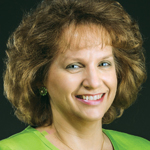
Tursi
Pat Tursi, chief executive at Elizabeth Seton Children's, has seen similar anguish among residents of its long-term care facility for children with profound disabilities in Yonkers, New York, and relatives who have been barred from being near them for months. She was so determined to ease the New York state restrictions on nursing home visits that she made her case to a joint state legislative panel in August.
"f you had to look into the faces of our beloved children every day wiping away tears because they miss their parents, are unable to communicate through technology and further can't understand why their families are not coming to see them, you would stop at nothing to change this policy," she said during her testimony.
On Sept. 9, the state eased the visitation restrictions on pediatric skilled nursing facilities. Under the new guidance, Elizabeth Seton Children's Center will be able to open up to in-person visits for residents.
Eager to 'do the right thing'
Across the nation, facilities like St. Patrick's and Elizabeth Seton Children's Center are grappling with restrictions on in-person visits that since early in the pandemic have been limited mostly to compassionate cases, such as when residents are dying. The restrictions were put in place as it became clear that congregate living centers such as nursing homes were especially vulnerable to outbreaks of the contagion. About 40% of the deaths from the virus have been linked to nursing homes or other adult long-term care facilities, according to a database maintained by The New York Times.
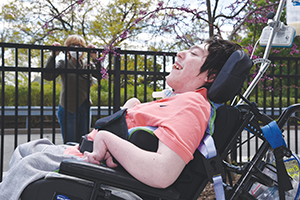
Jason, a resident of Elizabeth Seton Children’s Center in Yonkers, New York, visits with his mother, Mindy Leiter, through a fence this spring. The center for children with complex medical conditions has followed strict restrictions on visitation during the pandemic. Outdoor, distanced visits were among the few options for parents to see their children until recently.
The pressure on care facilities by residents, relatives and their advocates to ease visitation rules is nevertheless intense. At Elizabeth Seton Children's Center, Tursi is proud that none of its 169 medically fragile residents has contracted coronavirus. She maintains that the rigid precautions including temperature checks, symptom screening and masking that her facility has in place to keep out the virus will make safe reunions with loved ones possible.
The Centers for Medicare and Medicaid Services, which issued the strict visitation guidance in March, put out reopening recommendations in May for state and local health officials to consider when easing the visitor lockout. The recommendations suggest a phased approach to reopening based on several factors, including the absence of COVID among residents and staff, the prevalence of the infection in the service area, and whether the facility has adequate staffing. CMS said states could require all facilities to go through each phase together, conduct the phased reopening by region, or allow nursing homes to reopen on an individual basis as they meet state criteria.
Urging immediate relief
CMS isn't requiring that the restrictions be loosened. Its most recent missive on the topic, which came out in June in the form of answers to frequently asked questions, says only that visits "should be" allowed for "compassionate care situations." In an earlier memo, CMS said visits could be allowed when a resident's "health status has sharply declined."
Robyn Grant, director of public policy and advocacy for the National Consumer Voice for Quality Long-Term Care, says the CMS recommendations "basically didn't change anything in terms of what was currently happening on the ground regarding visitation."
"We think that the restrictions at this point really need to be eased," Grant says. "There's a subset of residents that are really suffering and have experienced significant decline in terms of physical well-being but also emotionally and psychosocially, and those individuals need immediate help."
Grant says this should be possible if facilities enforce precautions like symptom screening, temperature checks, masking and hand sanitizing.
Layers of guidance, rules
LeadingAge, the association of nonprofit providers of aging services including nursing homes, says states are cautiously moving to embrace the CMS recommendations. By the end of August, 41 of them had used CMS's recommendations to craft guidelines of their own for how care providers can let visits resume. A few states' guidelines practically mirror what CMS suggested. Others have drafted sets with different criteria, such as how low community COVID case rates must be before easing visitor restrictions. Within states, some counties have issued their own requirements.
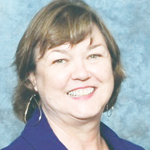
Reinhardt
Some care providers say the array of exacting requirements can be dizzying. Jeri Reinhardt is vice president of clinical services and performance excellence for Benedictine, which has care communities in several Midwestern states. "We know in our hearts that our residents need to see their families so we try to do whatever we can to make that possible," she says.
Reinhardt says Benedictine communities in Minnesota have been happy to invite "essential caregivers" back after the state became one of the earliest to allow close family members or companions of long-term care residents to resume visits. The communities follow the state's guidelines for when and where the visits can occur, health screenings, and precautions such as masking. The state limits the number of visits that can take place simultaneously within a facility.
Reinhardt says Benedictine also would welcome a more standard set of guidelines on visitation across the nation. "One thing that would help is if there was just one voice that was telling us what to do."
Complicated decision
Dee Pekruhn, director of life plan communities services and policy for LeadingAge, says the organization supports giving states and counties flexibility to develop their own reopening policies and leaving the final decision on whether to pursue reopening to care providers.
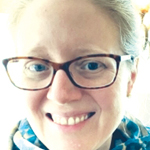
Pekruhn
Pekruhn says whether or not to open up is a complicated decision that administrators agonize over. They have to weigh how severe the COVID threat is within their facilities and in the communities where they are located and whether they have the resources to keep it at bay. "Many of our members talk about this all the time because of course they want to reunite families, but they also want to first and foremost keep their residents safe and protect them from the spread of COVID-19," she says.
To safely loosen restrictions, LeadingAge says facilities need resources. This includes personal protective equipment like masks and gloves and access to rapid testing. Many either don't have access to those resources or lack the money to pay for them. To that end, the group is urging Congress to approve more support for aging services providers, including $100 billion in funding.
Pekruhn says some facilities have found that to accommodate visits — including escorting visitors and residents to specially designated spaces, disinfecting those spaces, overseeing the proper use of protective garb and monitoring social distancing — takes the equivalent of about four full-time employees every week.
Ascension Living is among the systems that have created a new category of employee whose primary role is to facilitate visits.
"We hired hospitality companions in most of our communities to grow the amount of connectivity with families," says Danny Stricker, Ascension Living's president. "We understand the significance of these visits and will do what we can to offer these services."
'It's for the residents'
At St. Patrick's Home in Bronx, New York, Administrator Sr. Diane Mack, O CARM, says her team is hoping to meet the rigid state restrictions that would allow socially distanced outdoor visits with patients. The facility, also part of The Carmelite System, had reached the third and final phase of the process in early September. To complete that phase requires no positive tests for the virus among residents or staff for 28 days.
Sr. Mack was jubilant that after months of residents and their loved ones seeing each other only through windows or video screens, in-person visits between them might be only days away.
"We thank God every day and say our prayers every night to maintain this," she says of the negative test results. "It's not for us. It's for the residents. It's always for the residents."
School bell joyfully reunites wistful parents with their medically fragile children
Leader of center for frail children advocated to bring parental visitation back
While she waited for the state to ease its visitation restrictions and for Elizabeth Seton Children's Center to surmount all the hurdles to reopening, Pat Tursi found a loophole that answered the prayers of some relatives of the residents of the home for children with complex medical needs in Yonkers, New York.
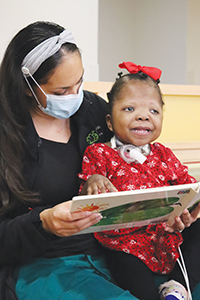
Vanessa Nunez, a therapeutic recreation specialist, works with Lianna at the school Elizabeth Seton Children's operates at its center for medically fragile children in Yonkers, New York.
The center includes a special education school for its residents that is attached to, but yet separate from, the part of the facility with the residents' living areas. This summer, Gov. Andrew Cuomo specifically eased restrictions on schools to let those that provide special education reopen. Coincidentally, at those schools parents are required to be part of the Individualized Education Program that the schools craft for each student.
"We slowly started calling parents and having them come in for two-hour visits," says Tursi, Elizabeth Seton Children's chief executive.
Over the four-week summer session, that parent involvement meant 33 families were reunited for the first time in months and Tursi says the process will continue in the fall session.
"The reactions when they came back together, it was so overwhelming," she
says. "I did get to witness a few of them, and I was in tears."
Those visits are just one of the ways Tursi pushed back against New York's rigid visitation restrictions, which were eased on Sept. 9.
She and one of the parents of the home's 169 residents testified before state lawmakers about how wrenching the months-long separation was for the children and their families. She also urged state health officials to reclassify the facility from nursing home to children's specialty hospital, which under state regulations never had to halt visits from parents and guardians.
In addition, Tursi recounted the heartbreak she's witnessed because of the separation to the media, including The Wall Street Journal. Among her stories is how four parents were so determined to stay near their children that they moved into the facility. The last of those parents moved out after about three months, when she faced losing her job.
— LISA EISENHAUER
Drop in infections creates 'true believers' in masking
The COVID-19 pandemic might have a tiny upside for nursing home communities, some people who work at them say: a realization that masking can help stanch not only the deadly novel coronavirus but also other viral infections.
Pat Tursi, chief executive at Elizabeth Seton Children's in Yonkers, New York, says that among the 169 young residents at its children's center, who all have severe and complex medical needs, the last viral infection of any type was on St. Patrick's Day.
"The masking is amazing," Tursi says. "We're true believers. I think we'll mask the whole flu season. The staff is healthy. Everybody's healthy."
Sr. Anthony Veilleux, O CARM, says St. Patrick's Residence in Naperville, Illinois, saw a similar stunning trend through the end of August. "We had like 25 people with upper respiratory infections in March and the other day we had two people on antibiotics," says Sr. Veilleux, director of mission integration at the long-term care community that can care for up to 193 residents. "It's the impact of the masks alone. What a positive impact they've had."
She adds, however, that the masking has probably been boosted by all the other precautions in place at the facility amid the pandemic — such as extra sanitizing and social distancing — in keeping infections at bay.
Amid the grimness of the pandemic and the harsh restrictions it has prompted at care communities, Sr. Veilleux says of the drop in infections: "It's the one good thing that we've seen."
— LISA EISENHAUER